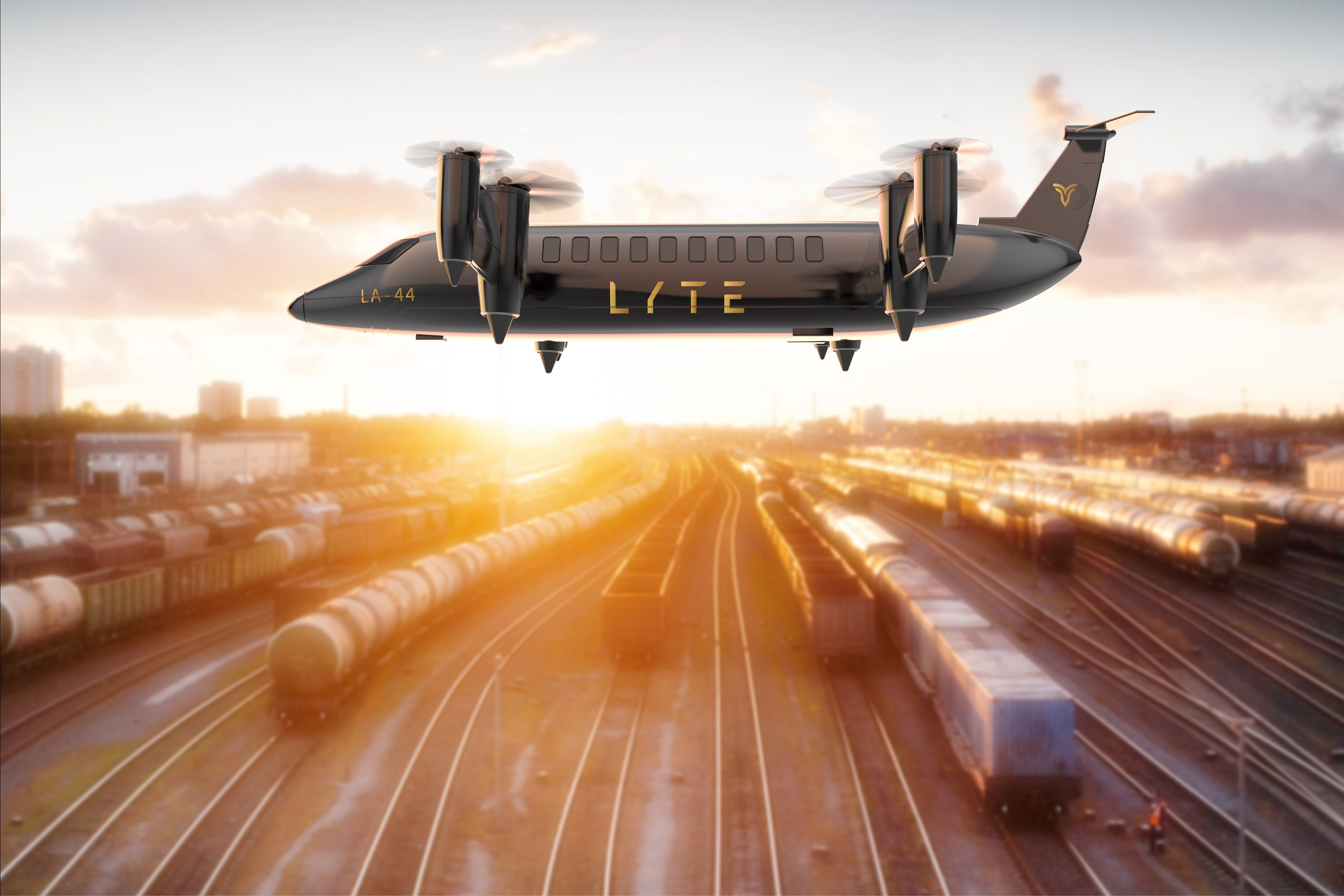Lyte Aviation this week unveiled plans for a pair of high-capacity, long-range VTOL aircraft aimed at both cargo- and passenger-carrying applications. The European start-up seeks to produce a full-scale prototype of the LA-44 SkyBus, intended to carry up to 40 passengers, within the next 24 months.
Unveiling plans at the Helicopter Investor conference in London on March 23, Lyte Aviation founder and CEO Freshta Farzam said that the SkyBus will have a range of 1,000 kilometers (625 miles) and a maximum speed of 300 km/h (187 mph). She said it could take until 2030 to bring the tandem tilt-wing design to market.
The SkyBus propulsion system will consist of four turboprop engines, fitted in pairs to each of the wings. On each wingtip, a hydrogen fuel cell electric motor will provide additional power. The company may add some battery packs for additional power redundancy.
Hybrid Power First, Hydrogen To Follow
Lyte’s ultimate objective is to rework the aircraft with all-hydrogen propulsion but first, it wants to lay the groundwork for a VTOL aircraft that it believes will transform regional aviation through its ability to bypass existing airports.
The company will likely use existing turboprop engines with a power rating of between 3,500 and 5,000 shp. It says these will be able to run on both jet-A and sustainable aviation fuel (SAF).
“Conventional, highly reliable turboprops are the best option for our aircraft program for the time being, with the aim to operate and refuel practically anywhere with the current infrastructure,” Farzam said. “With the constant evolution and expected investment in global infrastructure including vertiports and energy sources including SAF and green hydrogen and electric powerplants, the ambition would be to become fully hydrogen-electric in the future.”
Provided access to landing sites in urban and suburban areas can be secured, Lyte believes that the piloted SkyBus will emerge as a viable public transportation alternative to buses and trains. In the near term, noise from the aircraft’s conventional turboprop engines could be an obstacle to public acceptance but Farzam told FutureFlight her team is working on this challenge.
Partly for this reason, she envisages the SkyTruck freighter variant entering service first, operating away from populated areas. It will feature underslung load capability for roles such as firefighting and humanitarian missions, with a 4.5-tonne (9,900-pound) payload and 17 tonnes gross weight.
Farzam said that she expects regional airlines looking to launch new point-to-point services as being among early customers for the SkyBus, along with operators carrying workers to offshore oil and gas platforms under charter contracts. In her view, energy companies needing access to remote onshore locations might find the SkyTruck a more viable option than building new road and rail links.
Lyte has held talks with prospective infrastructure partners and operators in the Middle East. It is also targeting countries such as Norway and Canada as early-adopter markets.
Having begun working on the program three years ago with initial seed financing from private investors, Lyte is now preparing to launch a Series A funding round. The first objective will be to build a full-scale prototype by 2024.
The Lyte team currently consists of just three founders working from offices in Germany and the UK, with support from independent contractors. Farzan has a background in finance for green technology companies. She said that the other unnamed founders have extensive experience in aeronautical engineering.
As followers of the V-22 Osprey and the AW609 aircraft can attest, tilt-wing and tiltrotor programs can be complex and expensive in terms of development and certification challenges. While not refuting this, Farzam told FutureFlight that she is “grateful to first movers” in this field, including rotorcraft giants Boeing, Bell, and Leonardo, while remaining confident that Lyte will be able to meet any regulatory requirements.
Among Lyte’s earlier industrial partners are Inmarsat and Inflight Canada, with the former providing satellite communications support for operations in remote areas and the latter focusing on early cargo delivery use cases. Farzam said that the start-up intends to seek existing aerospace companies as partners to provide specific aircraft technologies and systems for its new VTOL models.
